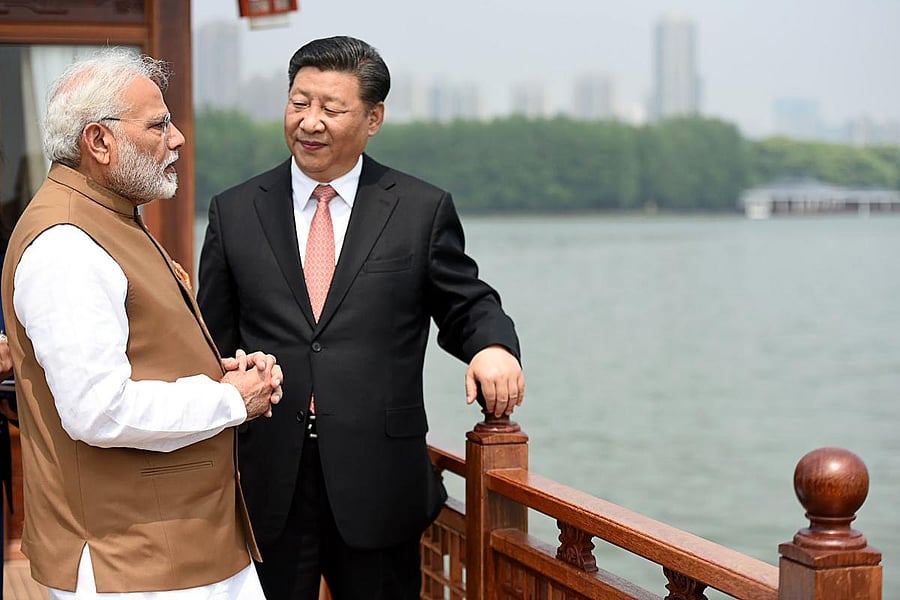
The first foreign dignitary Sushma Swaraj hosted after taking over as external affairs minister in Prime Minister Narendra Modi’s government in May 2014 was Chinese Foreign Minister Wang Yi. Swaraj delivered a strong message to Yi – if Beijing wants New Delhi to continue to adhere to the “One-China policy”, it must also reciprocate with a “One-India policy” and make sure that its China-Pakistan Economic Corridor does not infringe on India’s sovereignty.
Swaraj and Wang have met many times since, the latest being on June 4 this year, on the sidelines of the BRICS foreign ministers’ meeting in South Africa. “India will firmly adhere to the one-China policy and properly handle issues involving the core interests of China, such as Taiwan- and Tibet-related issues,” Xinhua, China’s state-run news agency, quoted Swaraj as telling Wang in Pretoria. New Delhi neither confirmed nor denied it, nor did it make public if Swaraj demanded reciprocity from China as she did four years ago.
But, about a month after Pretoria, Air India was made to replace ‘Taiwan’ with ‘Chinese Taipei’ in the list of destinations on its website. The Ministry of External Affairs was quick to endorse the decision of the national carrier, stating that it was in line with India’s “consistent position on Taiwan since 1949”. It was tantamount to re-committing India to the One-China policy – something New Delhi had carefully avoided doing for several years.
New Delhi’s not-so-subtle move to reassure Beijing on Taiwan again signalled its willingness to walk the extra mile to keep alive ‘the spirit of Wuhan’, where Modi and Chinese President Xi Jinping had an informal summit on April 27-28 and reached a “certain consensus” to mend ties that had hit a new low over the 72-day-long military face-off at Doklam in western Bhutan last year.
The One-China policy recognises only the People’s Republic of China, which came into existence in 1949 after the communists defeated the nationalists in a civil war. It does not recognise the existence of Taiwan (the Republic of China), where the nationalists retreated to and based the seat of the government after losing the mainland to the communists.
India – like most other nations – has been adhering to its One-China policy since 1949. It has been routinely reaffirmed in joint statements issued after meetings between the leaders of the two nations. It was in 2010 that New Delhi first declined to reaffirm the One-China policy in a joint statement issued after a meeting between then prime minister Manmohan Singh and his Chinese counterpart, Wen Jiabao. It was in retaliation to Beijing’s policy of issuing “stapled visas” – instead of normal visas pasted on passports issued by the Government of India – to the residents of Jammu and Kashmir, in support of Pakistan’s claim that the state is disputed territory.
The reference to India’s One-China policy did not return to the joint statements issued by the two nations even after Modi took office in May 2014. New Delhi was by then concerned over the China-Pakistan Economic Corridor, which was proposed to pass through areas in J&K that Pakistan illegally occupies. That was why Swaraj talked tough during her first meeting with Wang in June 2014.
China has never showed any sign of understanding India’s concerns as far as the CPEC is concerned. It rather brushed aside Delhi’s protests to continue works on the $ 50 billion economic corridor, which has emerged as a flagship component of Xi’s ambitious cross-continental Belt-and-Road Initiative. Yet, Delhi made Air India accept Beijing’s diktat to replace ‘Taiwan’ as ‘Chinese Taipei’ on its website.
Not only on Taiwan; India also signalled its willingness to review its approach on Tibet – another “core issue” for China. Even before Modi and Xi met in Wuhan, Delhi in February asked its leaders and officials to stay away from events to be attended by Dalai Lama, who has since long been accused by China of leading a ‘secessionist’ movement against its rule in Tibet. To avoid ruffling Beijing’s feathers, Delhi also made Tibetans in exile scale down the “Thank You India” event, which was to mark the beginning of the 60th anniversary of Dalai Lama’s escape to India.
But, even as the Modi government has gone out of the way to respect China’s sensitivities on both Tibet and Taiwan, Beijing has not shown any reciprocity on the core issues for India. China’s Communist Party mouth-piece Global Times recently reported that while 43 projects of the CPEC had already been completed or nearing completion, 157 more would be brought to fruition over the next 12 years. Beijing has not yet spelt out how it would address India’s concerns on CPEC infringing on its sovereignty. Neither has China dropped its policy of thwarting moves at the UN Security Council to impose sanctions on Pakistan-based terrorist Masood Azhar.
Beijing also continues to block India’s entry into the Nuclear Suppliers Group, which held its annual plenary in Latvia on June 15 but could not end the impasse on Delhi’s application for admission into the cartel. India has of late been cautious about its engagement with the US, Japan and Australia in the Indo-Pacific and seems keen to ensure its approach to the region does not appear overtly adversarial to China. Beijing, however, continues to make inroads into India’s neighbourhood, stepping up engagements with Nepal, Maldives and Sri Lanka and, of course, continuing its “all-weather friendship” with Pakistan.
Over three months have passed since Modi and Xi took the boat ride on East Lake in Wuhan and signalled an India-China détente. Beijing has done little to reciprocate, except for agreeing to import soya, sugar and non-basmati rice from India and promising to make it easier for Indian pharma firms to export to China. Too little to help balance bilateral trade, which is skewed in favour of China, let alone address the concessions and overtures Modi has made.

